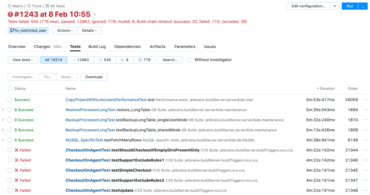Offizieller Lieferant
Als offizieller und autorisierter Distributor beliefern wir Sie mit legitimen Lizenzen direkt von mehr als 200 Softwareherstellern.
Sehen Sie alle unsere Marken.

Software schneller und mit weniger Fehlern entwickeln.
Live-Chat mit unseren JetBrains-Lizenzierungs-Spezialisten.